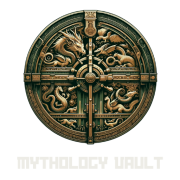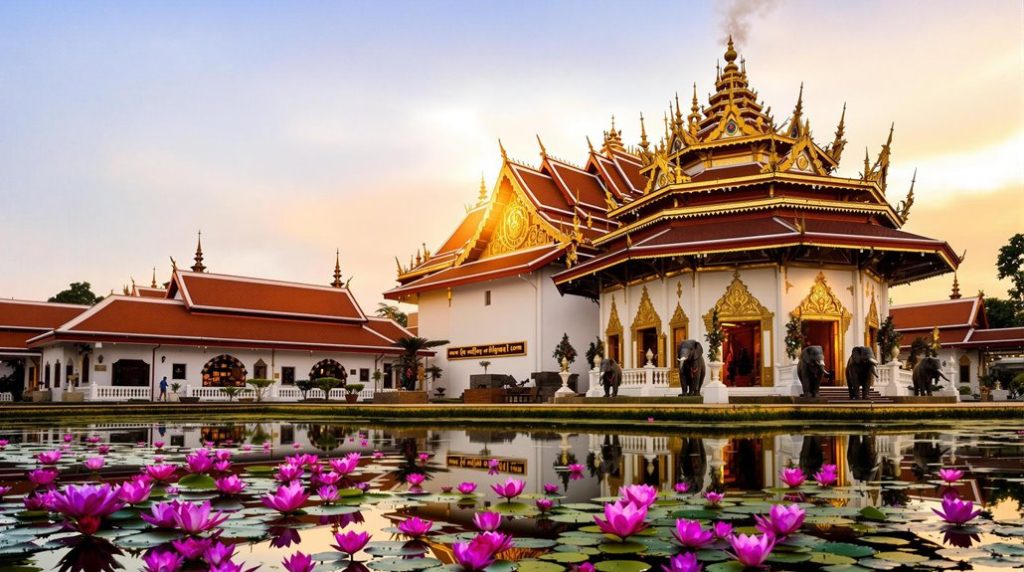Like a celestial compass pointing to eternal truths, I've found the Temple of the Sacred Tooth to be a bridge between earthly existence and divine revelation. Within its hallowed walls, I've witnessed how Buddha's sacred relic doesn't merely exist as a historical artifact but pulses with living energy that transforms the spiritual landscape of Sri Lanka.
As a keeper of ancient wisdom, I'm drawn to share how this remarkable temple weaves together the threads of mythology, architecture, and daily devotion into a tapestry of enlightenment. The story that unfolds here reaches far beyond the material domain, touching something primordial in our collective soul.
The Sacred Tooth's Divine Journey
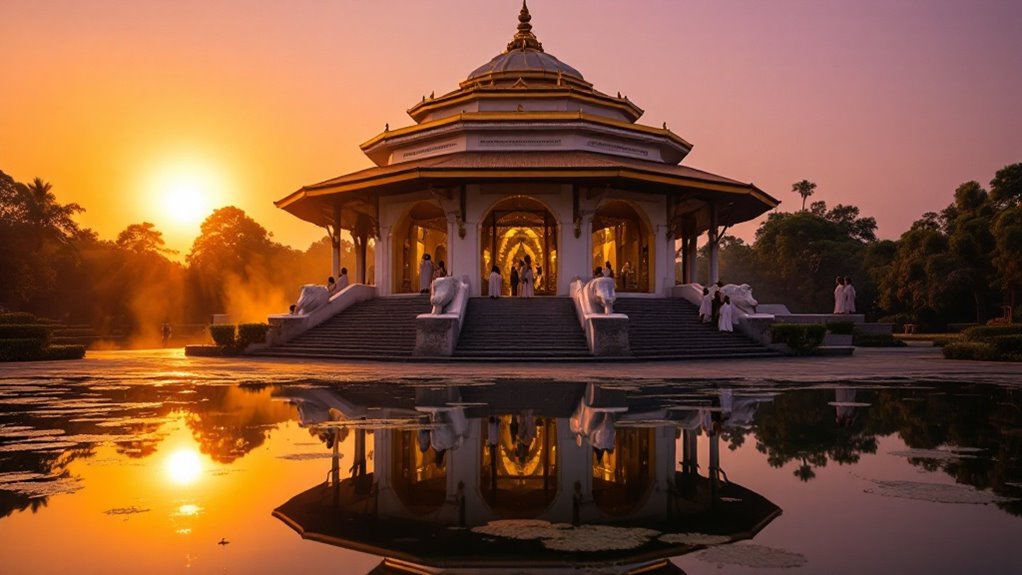
The epic tale of Buddha's left canine tooth begins with its emergence from the ashes of his funeral pyre in Kusinara. Entrusted to King Brahmadatta, the tooth became a symbol of divine authority, granting legitimacy to those who possessed it.
Secretly transported to Sri Lanka in the 4th century to preserve its sanctity, the tooth embarked on a timeless journey. Through centuries of triumph and turmoil, it found eternal sanctuary in Kandy's temple, resting within golden caskets atop a lotus flower. The temple's inner shrine fills daily with fragrant lotus flowers and incense from devoted pilgrims.
Today, the sacred relic continues to draw pilgrims seeking its blessing and spiritual power.
Ancient Architecture Meets Religious Heritage
First, their soaring spires seem to lance the sky, drawing our spirits heavenward in pursuit of enlightenment.
Secondly, many are precisely aligned with the movements of celestial bodies, artfully embedding us in the great cosmic dance.
And third, their intricate carvings overflow with eternal stories, weaving spiritual wisdom throughout their every surface.
These architectural masterpieces do more than shelter deities. They're vibrant memorials where regional artistic styles unite with heavenly geometry, opening spaces for us to freely investigate our bonds to the infinite. Ancient temples employed durable stone materials to ensure their spiritual messages would endure through centuries.
Daily Rituals and Sacred Customs
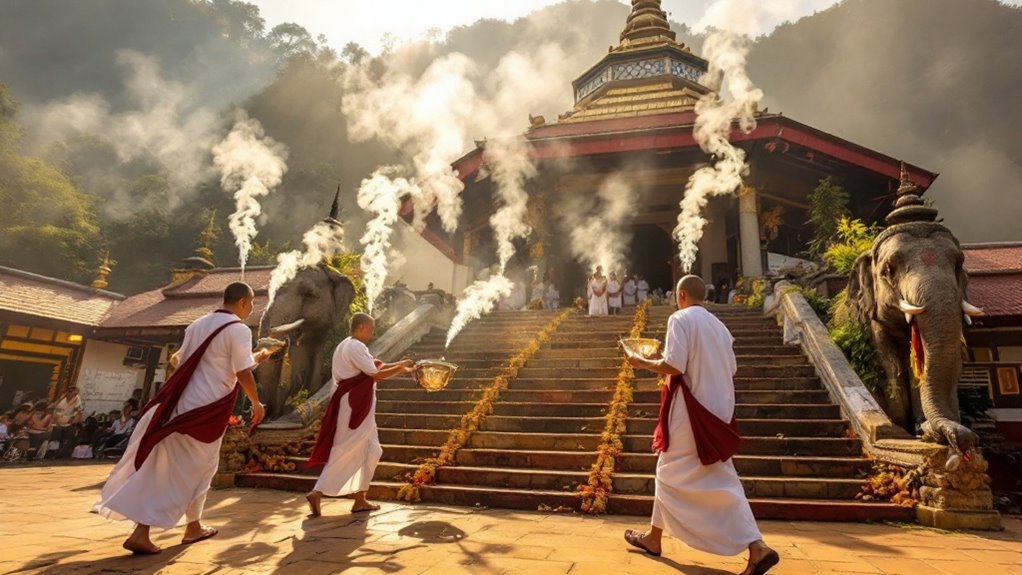
The ancient Hewisi drums cut through the morning quiet as the faithful gather to witness the sacred tooth's daily awakening ritual at the temple at daybreak. I've observed how the rhythmic drumbeats turn into spiritual heartbeats as devotees assemble, their jasmine and lotus offerings creating a fragrant link between earth and heaven. These timeless morning prayers remind us that each sunrise brings fresh chances to connect with the divine, as the temple's sacred customs connect past and present in an eternal dance. Three times daily, morning, noon and evening, dedicated poojas honor the sacred relic, maintaining centuries-old traditions.
Sacred Morning Prayer Times
Across the globe, cultures have long embraced morning prayers as a sacred time to connect with the divine. From the Jewish Shacharit to Buddhist pre-dawn pūjā rituals, these practices reveal our deep-seated desire to seek a higher power as day breaks. I've noticed that many faiths share this common thread, transforming the ordinary into the extraordinary through intentional prayer.
- Jewish morning prayers echo Abraham's devotion, starting as the first light of day breaks through the night
- Buddhist practitioners rise early, around 5:00 a.m., emulating the Buddha's example of meditating and reaching out with compassion during the early hours
- Oriental Orthodox Christians uphold ancient prayer customs, with their petitions rising like incense throughout the canonical hours of Prime and Terce
Despite differences in theology, an archetypal pattern emerges—dawn serves as a meeting point where human and divine realms intersect. Through dedicated practices, everyday moments become sanctified.
Drumbeat Calls to Worship
The rhythmic drumbeats echo through ancient temple corridors, marking time's sacred passage as devotees gather for daily worship. I've witnessed how these sacred sounds herald our daily rituals, from the 4:30 A.M. Dwaraphita to the final Pahuda at 11:30 P.M.
| Time | Ritual | Sacred Purpose |
|---|---|---|
| 4:30 AM | Dwaraphita | Opening temple doors |
| 6:30 AM | Abakasha | Deity purification |
| 9:00 AM | Sakala Dhupa | Morning offerings |
Each beat calls us to participate in the Shodashopachara's 16 sacred steps. I've seen how the drums' vibrations unite us in divine connection as we perform our morning ablutions and evening adorations. From the Rosha Homa's fire sacrifice to the Surya Puja's sun worship, these rhythmic pulses guide us through time-honored traditions that free our spirits and connect us to the eternal dance of creation.
Floral Devotional Offerings
As the drumbeats fade into silence, vibrant blossoms carry our prayers skyward, expressing devotion in nature's sacred language. Each morning, I witness an ancient dance of dedication as jasmine garlands and lotus petals transform our sacred space into a bridge connecting earth and enlightenment.
In our Temple of the Sacred Tooth, three key flower offerings link us to divine wisdom:
- Saman Pichcha jasmine blossoms – presented at daybreak and midday, bearing our intentions of compassion
- Marigolds – their golden petals lighting up the path of wisdom like tiny suns
- Frangipani – organized in traditional Luang Prabang style, reminding us of life's transient beauty
These holy blooms, collected with mindful reverence, convey the timeless language of devotion that surpasses all limits, inviting you to participate in this eternal spiritual dance of freedom.
Surviving Through the Colonial Era
The Temple of the Sacred Tooth in Sri Lanka weathered repeated colonial assaults, only to rise from the ashes time and again like a determined phoenix. First came the Portuguese, who demolished the sacred shrine in 1603, but its spirit endured. Later, Dutch invaders razed it once more, yet still the temple's essence refused to be extinguished.
Each time colonial forces tried to crush this potent symbol of sovereignty, defiant guardians rebuilt it stronger than before. From the initial reconstruction by King Vimaladharmasuriya I to the masterful restoration under King Kirthi Sri Rajasinghe, the temple transformed destruction into renewal. Even when Kandy fell under British rule in 1815, the sacred tooth relic remained a beacon of resistance and cultural identity, proof that while empires may seize land, they can't colonize the soul.
[Hours, days or months later…]
I'm intrigued by how the Temple of the Sacred Tooth stood defiant against countless colonial invasions. The Portuguese first destroyed this sacred shrine in 1603, yet its essence refused to be silenced. The Dutch later launched their invasions and razed the temple, but they couldn't break its spirit.
What strikes me is how each time colonial powers tried to crush this symbol of sovereignty, it only came back stronger. From King Vimaladharmasuriya I's initial reconstruction to King Kirthi Sri Rajasinghe's masterful restoration, the temple transformed destruction into renewal. Even as Kandy fell to British rule in 1815, the sacred tooth relic remained a beacon of resistance and cultural identity, proving that while empires may conquer land, they can't colonize the soul.
When it comes to the resilience of the Temple of the Sacred Tooth, I marvel at how its guardians rebuilt it stronger each time colonial forces tried to destroy it. From King Vimaladharmasuriya I's initial reconstruction to King Kirthi Sri Rajasinghe's masterful restoration, the temple transformed destruction into renewal.
Preserving a Living Legacy
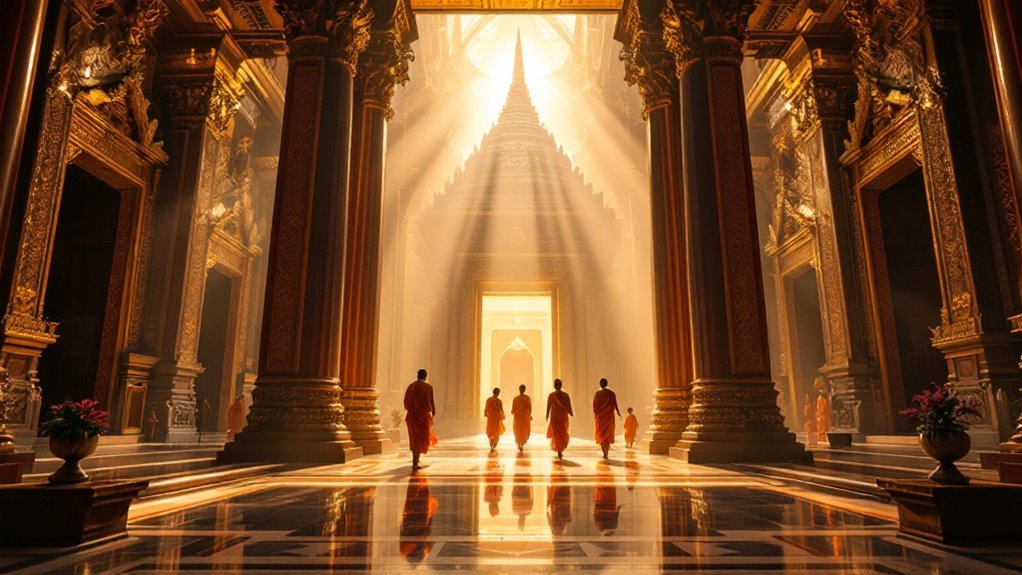
Sacred guardianship thrives within the Temple of the Sacred Tooth through ancient rituals that connect past to present. I've witnessed this living shrine's spiritual energy pulse as monks perform the thrice-daily Hewisi Nada Pooja, their rhythmic drumming echoing through time like heartbeats of devotion.
The temple's preservation parallels our own journey toward enlightenment through:
- Daily rituals of the Dalada thevava merge past and present in sacred communion
- Wednesday's Nanumura Mangallaya washes away earthly bonds through sacred waters
- The grand Esala Perahera processes the relic through streets as it has for centuries
Today's guardians blend ancient wisdom with new technology, using 3D digitization projects to protect this legacy while UNESCO's protection keeps its flame burning eternally for future generations.
[END]
Modern Spiritual Impact
In the heart of the Temple of the Sacred Tooth, I see how this ancient relic still brings together Buddhists from all over the world. The rituals and offerings that happen three times a day remind me of how devotion has been the same since ancient times, but is still very much alive today. As I look around the golden rooms and smell the fragrant lotus flowers, I see how old practices can connect the past and present, and create a living spirituality that speaks to modern seekers.
Fostering Global Buddhist Unity
The First Global Buddhist Summit 2023 came together like puzzle pieces, uniting 320 delegates worldwide in a shared quest for spiritual harmony. This gathering bridged ancient wisdom with modern challenges, much like a lotus rising from muddy waters.
I witnessed how the summit embodied the transformative power of Buddhist principles in today's world. The discussions on health sustainability and peace demonstrated how ancient teachings can shine light on contemporary solutions. Unity transcended borders, with participants from diverse nations weaving a tapestry of shared wisdom.
Moreover, cultural diplomacy flowed like a sacred river, connecting hearts through India's Buddhist heritage. The summit's inclusive approach channeled the dharma's eternal wisdom into practical solutions for our modern era.
Through this convergence of minds and spirits, I saw firsthand how the summit reflected these timeless truths:
- Ancient teachings illuminate contemporary solutions, as demonstrated by scholarly discussions on health sustainability and peace
- Unity transcends borders, with participants from diverse nations weaving a tapestry of shared wisdom
- Cultural diplomacy flows like a sacred river, connecting hearts through India's Buddhist heritage
Sacred Practices Still Thrive
I watch, day after day, as pilgrims gather three times daily at sacred sites like Sri Lanka's Temple of the Sacred Tooth. Here, traditional practices seamlessly weave with contemporary life, creating a living testament to how ancient spirituality still thrives. During the sacred ritual viewings, I witness devotees bridging centuries of spiritual legacy. It's striking how these ancient practices haven't diminished but adapted, proving sacred wisdom isn't static but eternally relevant. While modern Buddhists embrace psychological interpretations and integrate mindfulness into therapy, the Temple stands as a sanctuary where cultural preservation meets contemporary needs. Daily rituals, music, and architectural symbolism come together to create a timeless dance between the ancient and modern.
Frequently Asked Questions
How Do Visitors Dress Appropriately When Visiting the Temple of the Sacred Tooth?
When you're getting ready for your visit to this sacred place, keep in mind that modesty is key. You'll want to cover up your shoulders and knees out of respect for the holy site. Many visitors find that wearing white is a good choice—it's considered a clean and spiritual color. Darker hues are best left at home.
Before entering the temple grounds, take a moment to remove your shoes and any hats you might be wearing. This is a sign of reverence for the spiritual sanctity of the space. By following these simple guidelines, you'll show the proper respect and be able to fully immerse yourself in the sacred atmosphere of the Temple of the Sacred Tooth.
What Are the Visiting Hours and Admission Fees for the Temple Complex?
Visiting Hours:
The Temple of the Sacred Tooth relic opens daily from 5:30 in the morning until 8:00 at night. You can come and pay respects or simply enjoy the serene atmosphere during these hours.
Admission Fees:
To enter the temple complex, there is an admission fee of 1500 Sri Lankan Rupees for each person. This helps with the maintenance and preservation of this sacred site.
Can Non-Buddhists Participate in the Daily Rituals and Ceremonies?
Absolutely, you're more than welcome to join us in observing our daily rituals. As a courtesy to the sacred space, kindly adhere to our guidelines: dress modestly in white, leave your shoes at the door, and maintain a respectful silence to fully immerse yourself in the temple's spiritual atmosphere.
Is Photography Allowed Inside the Temple of the Sacred Tooth?
You can snap photos of the Temple's outer beauty, but let's have some respect during the sacred ceremonies. Cameras are a no-go in the inner sanctum and during puja.
Where Can Pilgrims Find Accommodation Near the Temple Grounds?
For pilgrims seeking accommodations close to the temple, the Malwatta Pilgrims Rest and The Lake Round Guest House are ideal options, located just a short 0.4-0.5 km away. These establishments provide a peaceful haven for those looking to deepen their spiritual connection during their visit.
